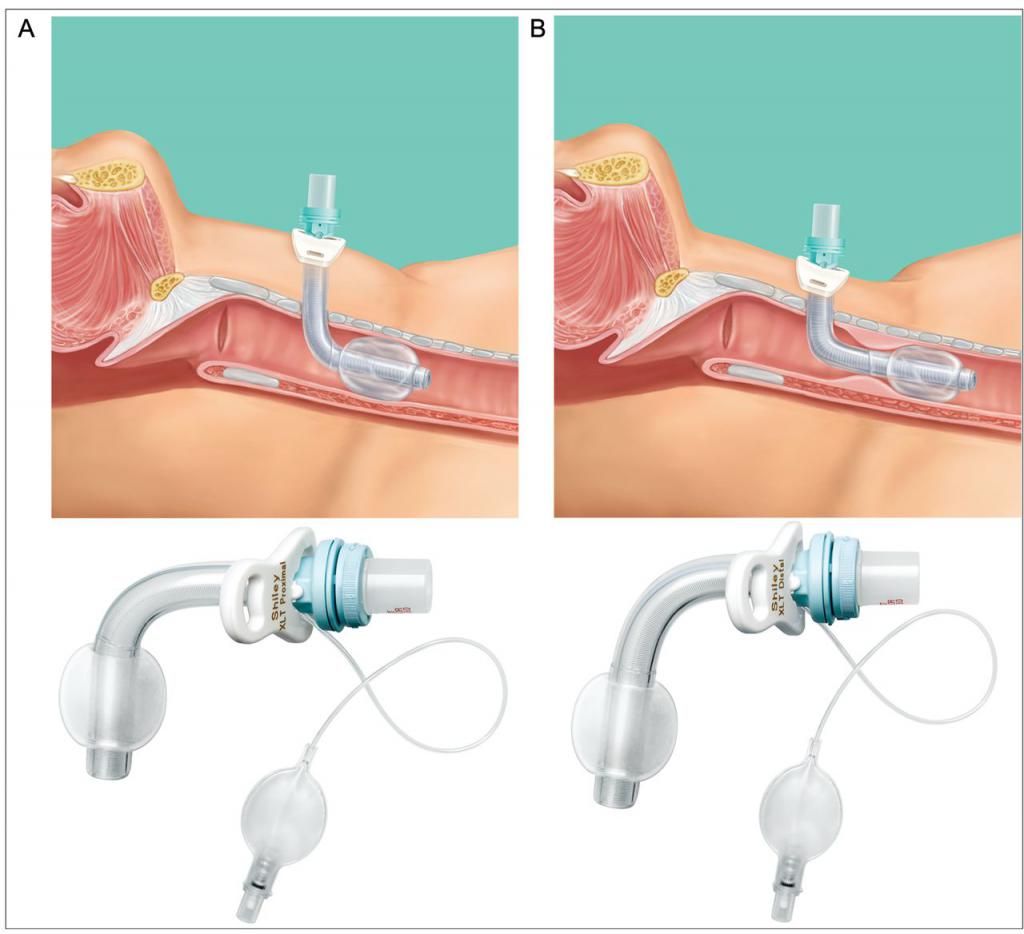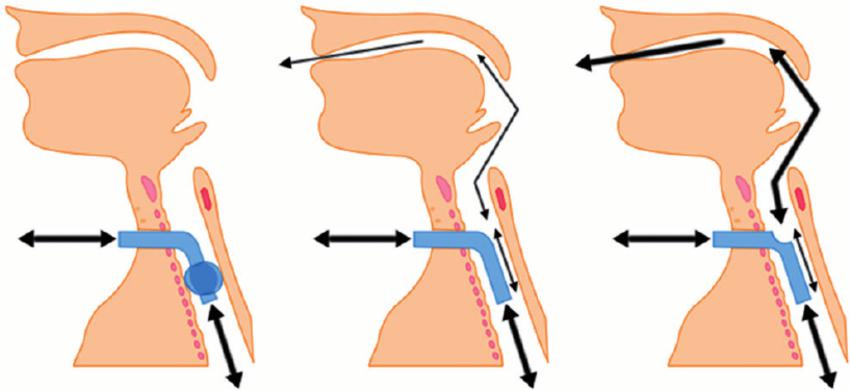A tracheostomy is an artificial external fistula of the trachea. Hence the name of the operation itself. A tracheostomy is a dissection of the trachea, after which a cannula is inserted into its lumen, which creates a stoma - a small rounded hole on the front of the trachea with further hemming of both its walls and skin wounds. The purpose of the operation is to provide the possibility of intratracheal and intrabronchial diagnostic and therapeutic manipulations. However, complications are often observed with tracheostomy. In the article we will analyze them in detail, give a description.
Indications for surgery
We begin the conversation about the indications for tracheostomy (we will analyze the complications below). The operation is necessary in various cases:
- Obstruction of the upper respiratory tract. This can be a foreign body in the larynx, its open or closed injuries, diphtheria, false croup, bilateral paralysis of the vocal cords, inflammation of the cartilage, swelling (allergic or inflammatory), chemical and thermal burns, neoplasms (malignant or benign), inflammatory processes with commissures, infiltrates, scars, squeezing aneurysm, tumor from the outside.
- Violation of patency of the upper respiratory tract due to accumulation of secretion and aspiration products. The reason is drainage dysfunction. This is a violation of cerebral circulation, traumatic brain injury, damage to the chest frame, brain tumor, coma with impaired cough reflex, swallowing, long-term asthmatic status, polysegmental pneumonia.
- Inability to breath with free upper respiratory tract. Polyradiculoneuritis, damage to the cervical spinal cord, bulbar category of poliomyelitis, severe myasthenia gravis, rabies, botulism, tetanus.
- Both acute failure and the complete absence of spontaneous breathing.
- Inability to intubate the patient during anesthesia due to anatomical deformities and defects of his pharynx.

Operation Classifications
There are several gradations of manipulation.
According to the technique of the surgeon:
- Typical. Classical, percutaneous.
- Atypical. Conicotomy, conicocatrization, conicopuncture, thyrotomy, conic-cricotomy, tracheo-conic-cricotomy, translaryngeal tracheotomy.
In relation to the isthmus of the thyroid gland:
By urgency, urgency:
- Planned - not limited to current days.
- Urgent - on the current day.
- Emergency - immediately.
Analysis of varieties of operation
Complications of a tracheostomy and conicotomy are similar. However, the last operation is different from typical (tracheal dissection). Conicotomy - an autopsy, dissection of a conical ligament (cricothyroid membrane). The location is not dangerous for surgical intervention, since it does not contain nerve fibers, large vessels. In emergency conditions, anesthesia is not performed. Bleeding is not observed, and an autopsy takes a few seconds.
Conic-cricotomy is the dissection of the cricoid cartilage and the cricoid membrane. A simple and safe operation, the implementation of which in emergency conditions lasts no more than a few seconds.
Conicopuncture - piercing a conical ligament with a surgical needle.
Catheterization is the insertion of a catheter into the trachea for injection ventilation through the interrupter.
The percutaneous variety is characteristic of calm operating conditions. Here sterility is most respected, surgeons try as much as possible to prevent bleeding, rupture of nerve fibers, damage to the esophagus. However, complications of tracheostomy are possible here. Let's move on to them.
Causes of negative consequences
The discipline that studies the layered structure of the anatomical areas, topographic anatomy, helps to choose the most rational operational access and reception. Complications of a tracheostomy are directly related to how competently the surgeon knows the technique of surgical interventions and how well he is familiar with the location of organs and tissues. A little later we will analyze exactly what negative consequences may occur after manipulation. Now let's get acquainted with the reasons for their appearance.
What causes the complications of tracheostomy? The main reasons are as follows:
- Violation of the physiology of the upper respiratory tract.
- Negative mechanical effect of the inserted plastic tube.
- Complications associated with improper insertion of the instrument, tube. They are determined by unprofessionalism, the inexperience of the team, the human factor - fatigue, carelessness, etc.
- Non-compliance with the rules for further (after surgery) care of the tracheostomy.
- Common complications that the operation can cause.
Each cause leads to a certain type of complications of tracheostomy. Let's consider them separately.
General complications after surgery
Possible complications after a tracheostomy, as well as after any operation:
- Various infectious processes - tracheobronchitis, endotracheitis, phlegmon of the neck, suppuration in the area of the surgical wound, pneumonia, abscesses.
- Difficulty or loss of conversational function in patients due to inserted tracheostomy. The patient has to communicate with staff using gestures, sounds, facial expressions. If you use your finger to block the outer opening of the tube, this can additionally lead to hypoxia.
- Violation of the cleansing functions of the ciliated epithelium of the bronchi and trachea. This increases the level of secretion of sputum. It leads to the formation of crusts both in the cannula and in the tracheobronchial system. It can reach a narrowing of the lumen, which will already cause hypoxia.
Complications associated with the manipulation
This, in particular, includes tracheostomy complications associated with the position on the operating table. Specific examples of adverse effects are as follows:
- Bleeding.
- Flowing blood mass into the trachea.
- Damage to the pleura, which leads to pneumothorax.
- Accidental dissection of the anterior wall of the esophagus.
- A complication of tracheostomy is subcutaneous emphysema in the neck and mediastinum. And an important point. Too pronounced subcutaneous emphysema can result in a too large incision in the trachea, a strong prolonged coughing of the patient, tight closure of the skin around the tracheostomy.
- Detachment of the mucous membrane of the trachea with the introduction of the cannula.
- Damage to the tracheostomy of the back wall of the patient's esophagus up to its through perforation.
Complications associated with errors in patient care
According to all the rules, the operation does not exclude negative consequences in the future. The latter may be associated with errors in patient care:
- If there is insufficient liquefaction and removal (coughing, aspiration) of mucus from the tracheobronchial system, then there is a great threat of atelectasis (especially the left lung), pneumonia.
- Dried or thickened mucus that enters the cannula from the tracheobronchial tree may partially or completely clog the device. This is the most common negative consequence of tracheostomy. Constant danger persists all the time the cannula is in the trachea. If the complication that occurs is not noticed at the right time by the caring physician, then it can lead to a severe manifestation of hypoxia.
- If the mucus from the tracheostomy is collected using a wide catheter with a powerful suction, this fact leads to a sharp decrease in intrapulmonary pressure. The lung contracts, decreases (sometimes even up to a collapse), which leads to acute hypoxia.
The mechanical effect of the tracheostomy
On the complications of tracheostomy and their prevention. The surest way to do this is to choose the right cannula. After all, a foreign object inserted into the trachea can itself cause many complications:
- The adverse mechanical effect of the tube on the mucous membranes and cartilage causes the onset and possible development of ulcers, pressure sores, various erosive bleeding, stenosis of the trachea after removing the device from it. What do these factors depend on? The larger (incommensurate with the diameter of the patient’s trachea) cannula was introduced, the longer it was in the body, the longer the cuff of the tube remained in a highly inflated position, the greater the likelihood of complications.
- A tracheostomy cannula may, unnoticed by personnel, fall out of an opening in the patient's throat. The danger will be severe hypoxia. Such a case is the cause of the patient's restless behavior, his strong cough, accidental grazing of the inserted tube.
- If the tracheostomy cannula is too long, then this fact becomes the cause of obstruction of one of the main bronchi. It must be remembered that it leads to the emergence and progression of total atelectasis of the lung, located opposite.
- Another possible complication is obstruction of the trachea itself with a valve that is cut out of its wall according to the Björk technique.
- The end of a too long cannula tube is a danger of irritation of the bifurcation of the trachea. This causes a constant debilitating cough in the patient, as well as undesirable changes in the functioning of his cardiovascular system.

Complications of impaired respiratory function
The fact that the manipulation excludes the nose and oropharynx from the breathing process leads to the following negative consequences for the patient:
- Un moistened, uncleaned and unheated air enters the lungs.
- The mucous membrane is dried.
- Both the trachea and the bronchi are cooled.
- Dehydration of the patient. Breathing through the tracheostomy without the fact of moistening the inhaled air increases the loss of water by the human system to 1 liter per day.
- Intake through the air directly into the trachea and bronchi of microbes. Their enhanced colonization leads to infection by microorganisms of the entire length of the respiratory tract, including the lungs.
- Infectious, inflammatory diseases arising from the previous paragraph.
Complications due to impaired cough function
Coughing produces a sanitizing effect on the trachea. In other words, cleans it. With the introduction of the cannula, it no longer performs this function. Coughing becomes ineffective, mock and arbitrary. Therefore, to clean the patient’s trachea from mucus is already required with the help of auxiliary means.
As we have determined, in some cases a tracheostomy is an obligatory operation. However, each of the stages of this event is fraught with the development of complications. Avoiding them is one of the main tasks of the medical staff.